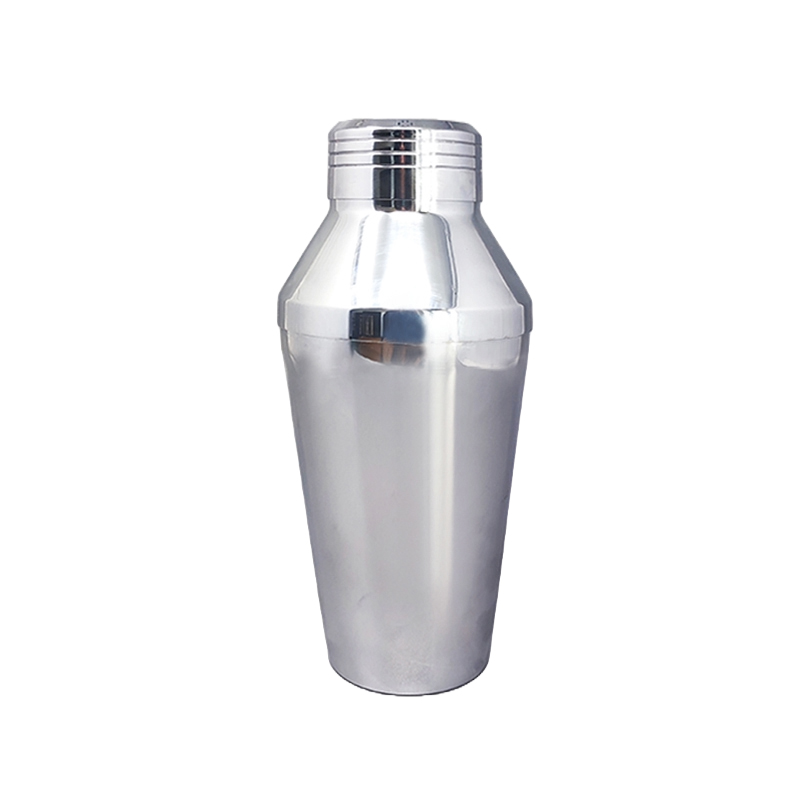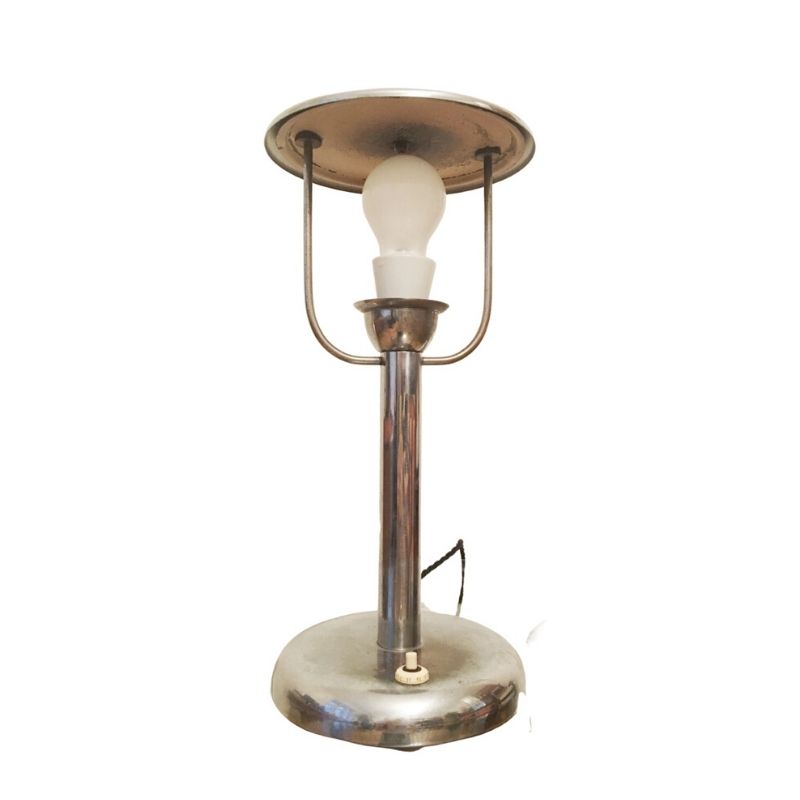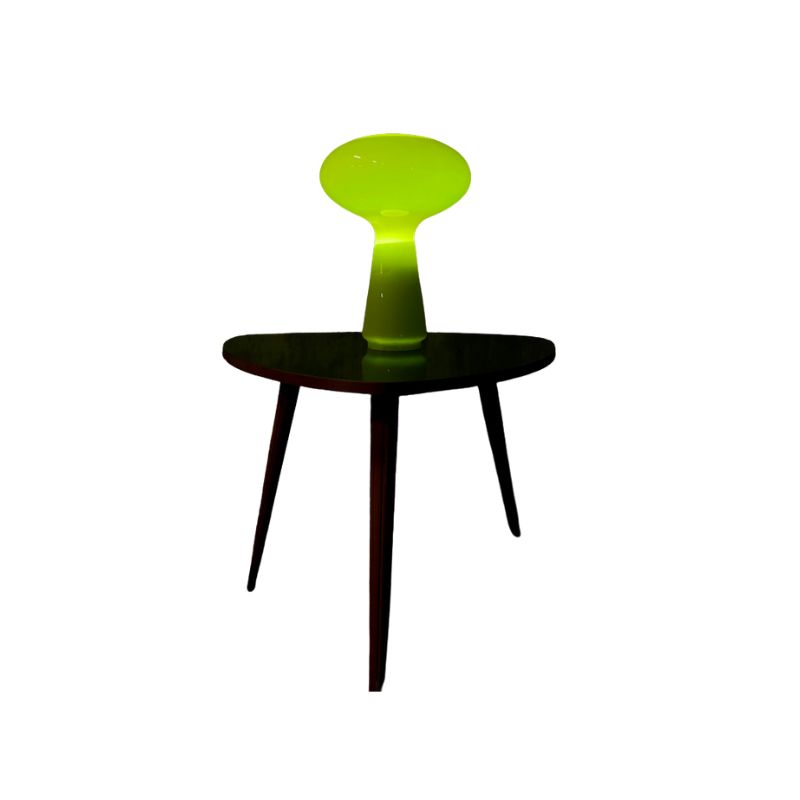Hello all,
I have just inherited my grandparents' beautiful pre-1970 Niels Moller model 78 dining chairs in solid rio rosewood with dark brown leather seats (or perhaps they're vinyl - but definitely original) and a magnificent Arne Vodder model 212 rio rosewood oval dining table. They are badly sun-bleached, having spent the past 40 years in my parents' home in the south of France. I have wanted this furniture all my life, but am saddened at the state it's in. The overall condition of the solid wood and tabletop veneer is good, except for the severe bleaching. The dining table has two extension leaves that have barely seen the light of day, so I know what colour I am trying to achieve. The chairs are all of different hues now, depending on which were in direct sunlight and which weren't. I cannot afford a professional French polishing job, but really want to restore their colour and uniformity if possible, and also protect them from further damage. My own dining-room is sheltered from direct sunlight, so they will not incur further damage. I want to proceed with caution here, as I have read some nightmare DIY restoration stories. Can anyone offer advice? I can source materials and products in France or the UK. A huge thanks in advance.
Katie,
Pictures will certainly help the forum better understand the issues you face; however, if what you have described is accurate, there is not likely much you will be able to do on your own.
I am far from a professional, but I have refinished/restored dozens of pieces of furniture. Everything I have read on Rosewood UV bleaching, says it is typically not possible to restore the color naturally, unless the piece is solid, and you are able to sand down to unbleached wood. This is certainly possible, for the chairs, but could be dangerous with the veneered table. Depending on the length of exposure, and conditions, the UV damage can sometimes reach up to an 1/8th of an inch in depth, which is right at the limits of even the best veneer thicknesses.
I know that there are professionals out there that able to artfully use stains, dyes and toners to imitate the unbleached color. But my understanding of the process, involves custom stain mixing applied by airbrush, and detailed brush work; not something even many experienced refinishing persons would take on.
I certainly don't want to represent that the piece is unsalvageable, but if you have to ask how to fix this, it is likely out of your range of ability. With a piece of this quality and material, I would hate to see you become one of those 'horror stories.'
Also, just my opinion, but a french polish is best left to other furniture styles, than Danish modern....
There is definitely no natural way to restore the color of rosewood. And the Vodder for Sibast model 212 has a veneer top, so you will not be able to sand through the bleaching. If you sand the edge banding you will probably expose the very dark wood underneath, and then you will have another mis-match. I would avoid sanding it at all if possible, and if you do, make sure you understand result you will get.
For me, normal UV bleaching any wood is not damage, per se. I would say that damage is something that happens beyond the normally expected course of events. And it is normally expected that furniture will be exposed to light, especially over the course of 50 years. It is very abnormal to find a piece of furniture that has not been exposed to light over that amount of time.
As Zephyr said, if you want to change the color of the table top, you will need to falsely color it to match your leaves. There are various ways or products to do this, but fundamentally it is an artistic endeavor as you are 'painting' on 'color.'
You might also consider whether exposing the leaves (and chairs) to light so that they bleach would make you happy with the table.
Thank you Zephyr and Leif Ericson for taking the time to respond. I will have the table on Wednesday, so will post some photos in a few days. I completely understand that a good and proper restoration (particularly of the table) is beyond me. It will have to wait until I can afford to put it in the hands of a professional. Leif, I hear what you say about UV bleaching not being 'damage'. I do not disagree. However, as I planned to use one of the leaves as a permanent fixture on the table, I was hoping to try and unify the colour. I should obviously not attempt to do this myself. Regarding the chairs, and considering that they are made of solid rosewood, would I be completely out of my depth in attempting to darken the UV bleached wood (see photos posted above)? If you were in my shoes, what would you do?
Many thanks.
I really don't mean to discourage you about your situation. It is an amazing set, with great sentimental value to you, that you didn't have to purchase. You are really in a pretty wonderful position, right off the bat.
If it were me, I would live with the state it is currently in (table and chairs), and slowly save up the necessary funds to have it professionally refinished. Put the conclusion of your savings schedule out a year, or two. In a couple years, you will have the money to do it properly, and hopefully references for an artisan that can do it properly (which means you will have to do some researching during this time). Most importantly though, you will have the experience living with the furniture, to know if restoring it, and spending the money to do so, is truly the correct decision for you.
There is no shame in using the furniture in the shape it currently is in. Anyone who understands and appreciates rosewood pieces, knows that this is part of rosewood furniture ownership. As Leif stated, this is not necessarily a 'defect' in the furniture....as a wood, it is rare enough, that just having rosewood furniture is a rarity and status symbol, in and of itself.
So here is what you going to discover if you try to sand these yourself. You will start on a rear leg, and discover that it gets far darker than the front leg. So you will suddenly realize you have to sand the whole chair.
Then you will realize you can't sand the areas around the upholstery (it appears to be leather!) and you will realize you will have to remove all the upholstery.
So let's say you skip ahead to the top of the chair, and the you will realize that you need to invest in a spine sander to get the inside corners of the backrests cross bars.
That costs a few hundred euro ad the title sanding tubes are not cheap, and you need a lot of them, because the rosewood gums up the surface fast.
Maybe here realize that the oil and shellac or lacquer underneath it is aso gumming up your sandpaper and yo are going through it at an alarming rate. So you realize you need to strip the chairs before you sand. So you decide to take the upholstery off so you won't get stripper on it, because you need to take it off to sand anyway.
You reader it is really hard to pull staples with a screwdriver, so you go to the upholstery supply place and buy a staple remover. Fortunately it is only a few euros, but there are are 4 different kinds, so you buy them all.
And yo start removing staples a bit faster now, but it is very hard to do it without tearing the leather. And then the leather tears. So you remember the leather that the upholstery supply place has. It only costs $400 for a good cowhide, and you figure you need made two.
So you've cut all the upholstery off now, beautiful vintage leather, but it's got to go. And you are stripping the chairs but there are so many surfaces, and it is not all coming off uniformly. And it is taking forever. You wonder if the citrus based 'safe' stripper is the maybe too weak. So you buy the chemical gloves, and the methylene chloride strong stripper, and the abrasive refinishing pads. It only costs maybe $10 euros per chair. And it is goes well except when you get the stripper on your arm, and get a chemical burn that takes 3 weeks to disappear. Don't do that again.
Finally the chair is all stripped, so now you can get back to coarse sanding! And you notice that your sander technique is not so good, especially now that the wood is coming off faster. You are rounding points, and edges, and curving flat areas. You are just happy you have not completely destroyed the chair you were working on, but it was a close thing. Another second and you'd have made the horn into a stump. So you wisely decide to spend about a week practicing on random wood shapes with your new sanding tools, so that you've got the right light touch to sand your chairs.
And now the chair is finally rough sanded, and almost black everywhere. (Please tell me you like them in black).
S yo start sanding finer and finer, and each time you realize the wood is so smooth, and you are still leaving scratches everywhere. And you realize you have to sand the entire chair, every scratch mark, with this grit, before you go up to the next, because it just takes forever with that one. And you realize that this rosewood is so hard and smooth and fine grained you are going to have to sand to 600 grit to get all the visible scratch marks out.
And it only takes a week, and you've bought $100 euros worth of sand paper, and sanding cylinders. And when you got to 600 grit, you still were not satisfied until you had sanded it with 0000 steel wool, and now the wood almost glows, and it does not even have a finish on it.
But you are not going to put an oil finish on it, because I just explained that oil finish on rosewood may not dry, because the anti-oxidants in the oil in the wood seep out. So you go to the hardware store, and buy de-waxed shellac. And you put it on. And the chair is a steaky mess, because the shellac dries the very second you put it in the chair. So you get the steel wool and sand every single streak out of the shellac. And you put on another coat of shellac since you've sanded through it all over the place. And a few more times.
Now you can finally oil. My goodness, wasn't that fast. That's it!
Now you cut out a new piece of cowhide, oh, but you need a stapler. And you read here that the manual stapler, and the electric staplers aren't so good. So you go buy a pneumatic stapler, and an air compressor. Only costs $200 euros.
And you need jute webbing, and cotton batting, and a bit of foam. $10 euros per chair. And you discover that putting the leather on there stretched just right is not so easy, so you go buy 10 chairs you don't care about and some cheap cloth just to practice doing it right, only cost $50. Because practicing on leather wood cost a lot of money.
And you are finally done, and the chairs don't match the table at all anywhere. But the chairs look great! And it's one cost you 3 thousand euros and 6 months of your life. And amazingly you did not ruin your chairs because now you see other chairs done by 'professionals' that look terrible, and you realize that you were extraordinary lucky about 1000 times that you didn't destroy your chairs.
While you consider your options why don't you stick that one leaf out in the sun, somewhere it won't get rained upon and not behind a window, because they block ultraviolet light. See how fast it lightens up.
Leif, thank you for your eloquent depiction of a worst-case-scenario dystopian nightmare. I get the picture. I really do. I have a job, and a life, and am clearly not going to embark on such an outrageous project - especially one that may yield truly terrible results. You speak like someone who has obviously been down that road. I am happy to learn from others' experiences! I will certainly try and get the leaves to lighten naturally by UV exposure, just as you suggest.
Zephyr, thank you for your positive and supportive advice. Yes, I am truly lucky to have this wonderful set of furniture, especially with all its emotional value.
I will use it and love it and not bow to the pressure of wanting to have it looking "just-so". It bears the marks of a lifetime of use - and is not a gallery showpiece, or being spruced-up for a huge profit.
My very last question - how should I care for it? Should I stay away from waxes, oils and polishes entirely? My gut says that I should.
I have been down this road a few times. I wouldn't want to learn the way on my family's heirlooms. You would have a much easier time with teak, but you have rosewood.
I see no reason why you can not use an oil or a wax. If you use a teak oil meant for exterior (and interior) use it will have UV blocking particles in it. They will darken the wood. A few applications will make it a bit darker. There are also tinted 'Danish oils.' They will basically do the same thing. There are also neutral oil finishes.
You might even try getting a bit clever about it, and apply a darkening oil to the light surfaces, and a neutral oil to the dark surfaces.
Different oils will have different sheens, so you might notice that while you are doing this, but you can put a coat over the top at any time to equalize the sheen.
Just make sure you wipe excess oil off, and let it dry fully between coats.
Maybe with a bit of intentional UV bleaching, and some clever oiling you can make the contrast less stark.
You could also put the chairs out in the sun with the leaf, dark side towards the sun. I am not at all bothered by the color difference of the chairs, for what it is worth. I understand your frustration with the leaves not matching the table top, though.
If you need any help, please contact us at – info@designaddict.com









